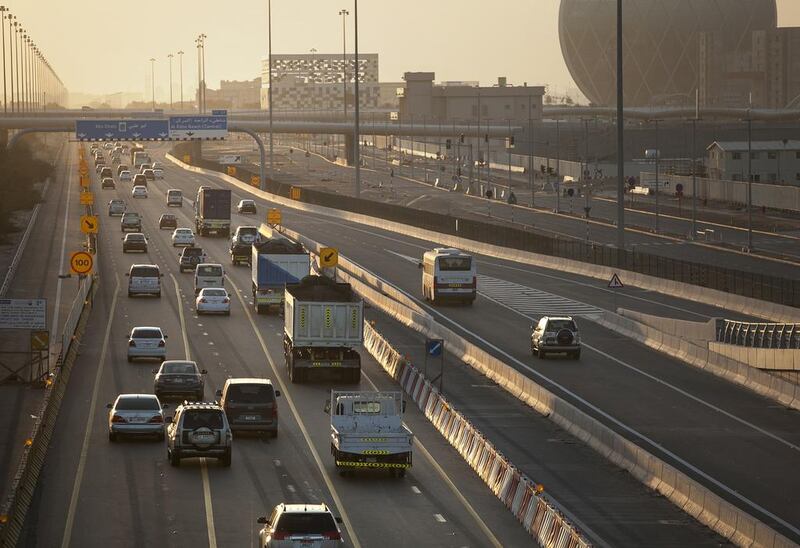Whenever I travel from Dubai to Abu Dhabi two landmarks on the E11 highway always grab my attention, depending on whether I'm travelling at night or by day.
Tucked inside an unexpected lay-by 15 kilometres or so beyond Ghantoot stands a bank of menacing white strip lights that glare, like an unnervingly man-sized Insect-O-Cutor that's designed to attract drivers like moths to a neon flame.
Other than a lone mobile phone mast, there are no signs that announce the lay-by's existence and by the time you see the mast, which is difficult in the nocturnal sodium fog that bathes the motorway, it's usually too late. At first I thought the bulbs belonged to an advertising hoarding that had lost its poster, but over time I've learned to look past their glare and realised that they actually adorn a cafe that I've never managed to spot when passing during the day.
At the best of times, I imagine the place to be a haven for tired drivers who prefer their karak chai dispensed in styrofoam, but I've never wanted to confirm this because I find the idea of stopping here terrifying.
If the unadorned banks of fluorescent fixtures are reminiscent of the work of the American minimalist artist Dan Flavin their location also lends them a terrifying aura that's pure David Lynch. A mixture of the Winkie's diner scene from Mulholland Drive and Twede's Cafe in Twin Peaks the lights, although purely functional, contain an ambiguity and degree of mystery that's entirely absent from the works that adorn the walls and electricity substations of Al Raha Beach.
The most visible Abu Dhabi-based examples of a rash of street art that's currently spreading throughout the emirates, these murals are cosy and sentimental one-liners; the aesthetic equivalent of a greeting card. The largest, which measures 600 metres long and adorns a rogue wall that runs beneath the Aldar headquarters, was completed by an international team led by the Miami-based Dominican painter Elio Mercado in 2016.
The move incensed UAE-based artists at the time, who believed such a prominent commission should have been awarded locally, but the bigger crime was not just in creating such a work to mask an architectural mistake but in underestimating local audiences.
"It's a perfect way to engage with a crowd that's not used to seeing art," Mercado told The National, seemingly unaware that he was addressing an audience well-used to Art Dubai and Abu Dhabi Art and to seeing street art by artists of the calibre of eL Seed.
If the Mercado wall is patronising, the kitsch that adorns the nearby substation – children smile as they blow bubbles and watch balloons drift – is the equivalent of a cloying advertisement that refuses to go away.
The work echoes Banksy's Girl with a Balloon, which was voted as Britain's best-loved artwork this week in a public poll alongside other crowd pleasers such as Peter Blake's Sgt Pepper album cover and The Singing Butler by Jack Vettriano.
Originally stencilled on the side of bridge on London's Southbank in 2002, Banksy's work features a wind-blown girl watching her red, heart-shaped balloon as it blows away and has since become a staple of T-shirts, prints, souvenirs and greeting cards, which is arguably where it works best.
Like an illustration that fails to illuminate or an ad that misses its target, works like Mercado and Banksy's may catch the eye, but when it comes to repeated viewing they're as stimulating as wallpaper. When it comes to engaging my imagination, I'll take the bare bulbs of Ghantoot any day.
Forget the cosy street art on the E11, give me roadside neon any day
15 kilometres or so beyond Ghantoot stands a bank of menacing white strip lights that glare, like an unnervingly man-sized Insect-O-Cutor that’s designed to attract drivers like moths to a neon flame

More from The National




